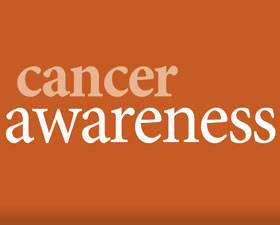Cancer staging helps indicate prognosis
As frightening as cancer can be, evidence indicates that the survival rate for most cancers is increasing and that many are beating the odds against this potentially devastating disease. Although it can be difficult to pinpoint just how "dangerous" a specific cancer case may be, a universal method of staging classification helps patients understand the severity of their cancers and their prognosis.There are different staging systems for cancer, and they continually evolve over time as more information is learned about cancer and cell behavior. Physical exams, special imaging procedures, pathology reports, surgical reports, and other tests help to determine the stage of cancer.
Staging is important because it can help doctors plan appropriate treatments based on how far the cancer has advanced. However, while staging is an important indicator of how a cancer should be treated, it cannot predict the end result of a patient's battle with the disease. It also isn't foolproof because it requires human identification of cancerous cells intermixed with healthy cells. New, highly sensitive methods of staging are in development with the hopes that they can lead to better precision and better prognoses.
The most familiar cancer staging system uses Roman numerals (from 0 to IV) to describe tumors and the spreading of cancer cells in the body.
Stage 0: The first stage is commonly referred to as carcinoma "in situ," which is a Latin phrase meaning "in its place." These are very early-stage cancer cells that have not spread beyond their immediate location. They are usually very treatable.
Stage I: In this stage cancers are localized to one part of the body.
Stage II: This is a stage when cancers are considered locally advanced. They may have spread beyond their original location.
Stage III: This describes similar conditions to Stage II cancers but more advanced. There may be further spreading or tumors may be larger.
Stage IV: In this stage, cancer has spread to other locations throughout the body.
Another system that is widely used is TNM staging, which has been accepted by the International Union Against Cancer and the American Joint Committee on Cancer. Many medical facilities now use the TNM system as the main method to reporting on cancer. TNM stands for "Tumor, Nodes, Metastasis." An equation is created using these letters together with numbers to break down a cancer diagnosis more specifically. Here is the description, courtesy of the National Cancer Institute.
Tumor (T)
TX: Primary tumor cannot be evaluated
T0: No evidence of primary tumor
Tis: Carcinoma in situ
T1, T2, T3, T4: Size and/or extent of primary tumor
Regional Lymph Nodes (N)
NX: Regional lymph nodes cannot be evaluated
N0: No regional lymph node involvement
N1, N2, N3: Involvement of regional lymph nodes, i.e. number of nodes affected and extent of spread
Distant Metastasis (M)
MX: Distant metastasis cannot be evaluated
M0: No distant metastasis
M1: Distant metastasis is present
Cancer staging can help save lives and provide reassurance to patients. While it's not a foolproof method, it is one internationally recognized and used to be sure the best treatment options are provided.




